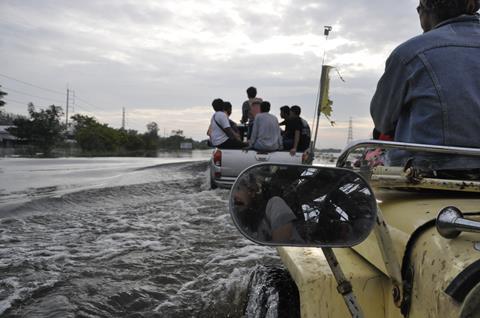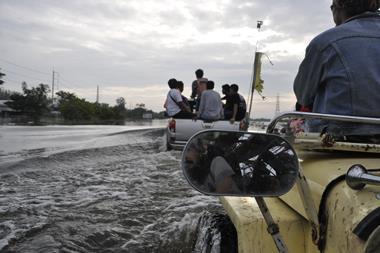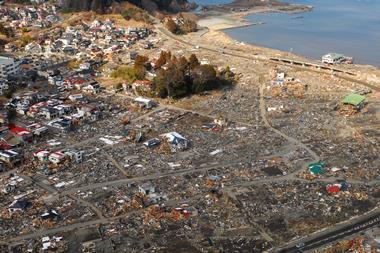Continued flooding in Thailand has killed almost 400 people and is having a devastating impact on businesses and their ability to shift supplies

The worst flooding to hit Thailand in fifty years has dealt a body blow to the country’s economy, damaged nearly 15,000 factories and jammed up corporate supply chains, particularly in the automotive and electrical industries.
Research just published by Aon Benfield said the catastrophe has had a “cascading effect” on the automotive, electrical appliance and tourism industries.
The floods have crippled Thailand’s economy. The government estimates the economic loss to be about $6.5bn (initial insurance loss estimates are in the region of $3.3bn). Thailand’s Finance Minister reported that the country’s economy would contract in the fourth quarter. The full year GDP growth estimate was cut from 3.7 % to 2 %.
The following analysis is mainly drawn from an Aon Benfield special incident report.
Ever since the north of Thailand was first hit by floods at the beginning of the monsoon season, rainfall has increased and the flood waters have spread across the country. The rains have been ongoing since July and are expected to continue for weeks to come.
According to the latest figures from Thailand’s government roughly half a million people are currently living in temporary shelters and the number of fatalities has reached 373.
In the business sector the floods have done their damage too, triggering a chain reaction of factory and manufacturing shutdowns. The catastrophe has damaged over 14,800 industrial plants, according to Aon Benfield.
Among the hardest hit industries are electrical appliances, medical equipment, automobiles, as well as the food and beverage industries (10% of the nation’s rice farms have been destroyed).
The catastrophe has damaged over 14,800 industrial plants
The automotive sector is one of the hardest hit industries. The reinsurance broker reported that the floods are likely to have a short-term effect on the regional and global automotive supply chain.
“The situation has had a cascading effect on automotive assembly and production in Thailand, with almost 10 % of all auto parts for local production coming from flood-affected regions,” explained Aon.
Toyota, Auto Alliance Thailand, Mitsubishi Motors and Nissan are all dependent on auto parts makers in the flood affected regions. The broker said that up to 100,000 vehicles may be lost due to the shutdown of Rojana Industrial park in Ayutthaya, one of the most heavily affected areas (see map below).
All five industrial estates in the province (Rojana, Saha Rattana Nakorn, Hi-Tech, Bang Pa-in and Factoryland) have been inundated. Ayutthaya accounts for 7 % of Thailand’s economy and generates at least 15 % of the country’s total manufacturing output.
“This region was just beginning to recover following the shutdown of factories after the deadly earthquake and tsunami event that struck Japan in March 2011,” said Aon Benfield.

The electronics industry has alson been badly affected. Thailand produces about 70% of the world’s hard disk drives and production is expected to be out of action for at least 56 days. The floods are predicted to decrease sales by 20m leading to a 25% hike as demand outstrips supply.
As StrategicRISK reported previously, multiple electronic manufacturers (including Toshiba Corp., Hitachi Ltd, Canon, Western Digital and Hutchinson Technology) were forced to shut down production. Sixty percent of Western Digital’s global computer hard drive production alone comes from Thailand.
Tourism, a major source of income in Thailand, is another severely impacted sector. “Any serious disruption to commerce or tourism in Bangkok would cause impacts from the flooding to reach a scale even larger than what has been seen throughout the rest of the country,” said Aon.




















No comments yet